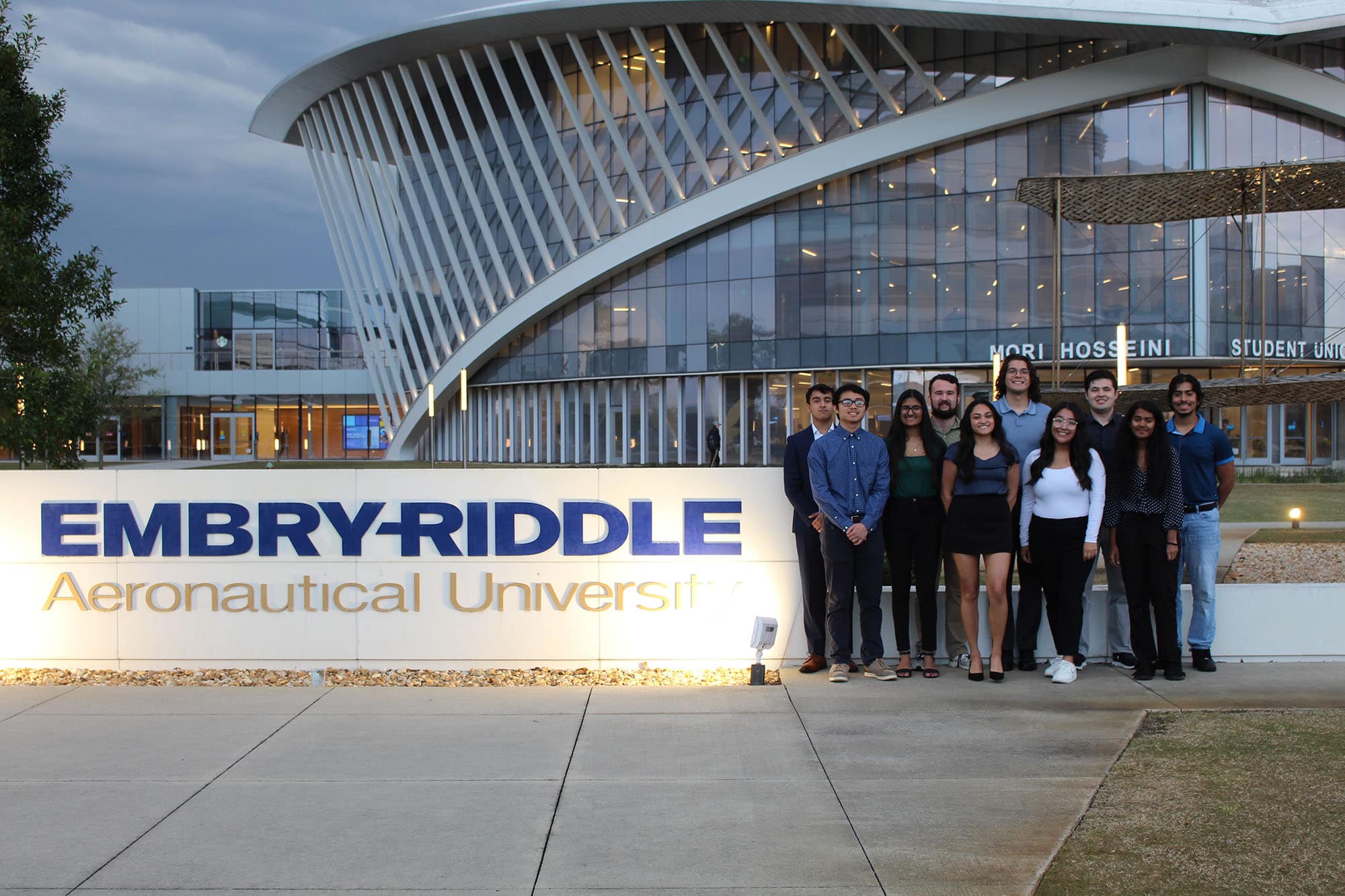Embry-Riddle Student Teams Advance to NASA Human Lander Challenge Finals

Two Embry-Riddle Aeronautical University teams have been chosen to present their research investigating moon dust at NASA’s Human Lander Challenge (HuLC) Competition Forum.
Teams of undergraduate and graduate students from universities nationwide were challenged to propose innovative solutions to manage lunar dust, which can be abrasive and damaging to hardware during space travel. Finalists were chosen based on their proposals, with each team receiving a stipend award to develop its concept then present it at the HuLC Competition Forum, June 25-27, in Huntsville, Alabama.
The 12 finalists will present their innovations to a panel of industry experts, with the top three teams set to share an $18,000 prize, along with earning the opportunity to build their concepts for possible future use in an Artemis lunar mission
Dust Yourself Off
One of the Embry-Riddle finalists is a 10-student team from the Daytona Beach Campus, chosen for its CRATER (Ceramic Research Advancement Technology) project. The team’s research is focused on using a ceramic Tungsten Carbide coating with a lotus leaf pattern to decrease the amount of lunar dust that adheres to spacecraft that land on the moon.
"We started this project to reduce problems with lunar dust on the moon, which can be fine and abrasive and damage landers,” said Miquela Smith, a junior Aerospace Engineering student and CRATER’s team/research lead. “It’s been a big concern for NASA, and our purpose is to find an innovative solution.”
The team is comprised of College of Engineering students, working with advisor Dr. Seetha Raghavan, professor of Aerospace Engineering and the college’s associate dean for Research and Graduate Studies, in a lab at Embry-Riddle's Research Park.
“The CRATER team has been amazing with all the energy and passion they have to answer NASA’s challenge,” said Raghavan. “They are not only creative in their approach to solving the challenges that come with lunar exploration, but also exceptionally detailed in scientific rigor and well-organized so that every member is engaged in contributing to this endeavor. That is a great combination for success.”
Smith, who has an internship this summer working on rocket propulsion systems with Northrop Grumman, in Utah, said her team is conducting a variety of tests to prove the coating’s adhesion and wear-resistance, including cryogenic and heat testing to ensure the coating will not melt in high heat or crack in very cold temperatures.
“Everyone is so excited to be recognized by NASA as a finalist,” said Smith. “We’ve been able to really grow and learn from this experience.”
In addition to Smith, the CRATER team includes seniors Maximus Mendez and Justin Astacio; juniors Zeba Momin, Tristan Ahuna, Caleb Thompson, Luizandrei Galanida and Kristen Sanchez; and freshmen Joanna Jose Fnu and Avi Waghray. All students on the team are Aerospace Engineering majors, except Sanchez, who is a Mechanical Engineering major.

The PARSEC team from the Prescott Campus is also a finalist at the NASA’s Human Lander Challenge (HuLC) Competition Forum. Students on the team include (pictured from left to right) Grant Bowers, David Clay, Jakobe Denby, Aidan Kihm, Sanaya Nichani and Bruce Noble. (Photo: Embry Riddle/ David Clay)
Creating a Landing Pad
Another team from Embry-Riddle’s Prescott Campus, comprised of six Aerospace, Mechanical and Software Engineering undergraduates, will present their research project in the finals. The project, called PARSEC (Plume Additive for Reducing Surface Ejecta and Cratering) proposes a theoretical solution to mitigate the effects of plume-surface interaction (PSI) during lunar landings.
“They are a group of very proactive students,” said PARSEC team advisor Dr. Siwei Fan, an assistant professor of Aerospace Engineering at Embry-Riddle’s Prescott Campus. “This opportunity is huge for them.”
NASA’s Artemis program aspires to establish a long-term human settlement on and around the moon in the coming decades. However, simply landing a spacecraft on the moon safely remains a challenge.
“Moondust is extremely sharp and minuscule,” said David Clay, an Aerospace Engineering sophomore and project manager of the PARSEC team. “Such small particles can accelerate up to three kilometers per second from the plume of a lander and sandblast expensive equipment. Things can get out of control quickly.”
PARSEC’s proposed design would attach near the lander’s engine nozzle, positioned to release a special granular additive into the exhaust plume during descent. The mixture would fall to the surface and harden, limiting the amount of moondust disrupted during landing.
“The additive consists of lightweight ceramics like alumina and metals like aluminum,” said Clay. “When the powder deploys into the plume, it melts before reaching the surface where it sticks to the loose regolith, preventing it from being ejected.”
Looking Ahead
Both the Daytona Beach and Prescott teams have received a $9,450 stipend from NASA to refine their concepts for final presentation at the June competition.
“Being selected for funding would mean that we have developed something that NASA deems worthy of further research and testing,” said Bruce Noble, PARSEC deputy project manager. "It would allow us to work with NASA — a dream for many of us — and also that significant progress has been made towards a sustainable human presence on other celestial bodies.”
The Human Lander Challenge (HuLC), sponsored by NASA’s Human Landing System Program and managed by the National Institute of Aerospace, is an initiative supporting NASA’s Exploration Systems Development Mission Directorate’s (ESDMD’s) efforts to explore innovative solutions for a variety of known Human Landing System (HLS) challenge areas.
*Keaton Ziem contributed to this report.

 Michaela Jarvis
Michaela Jarvis